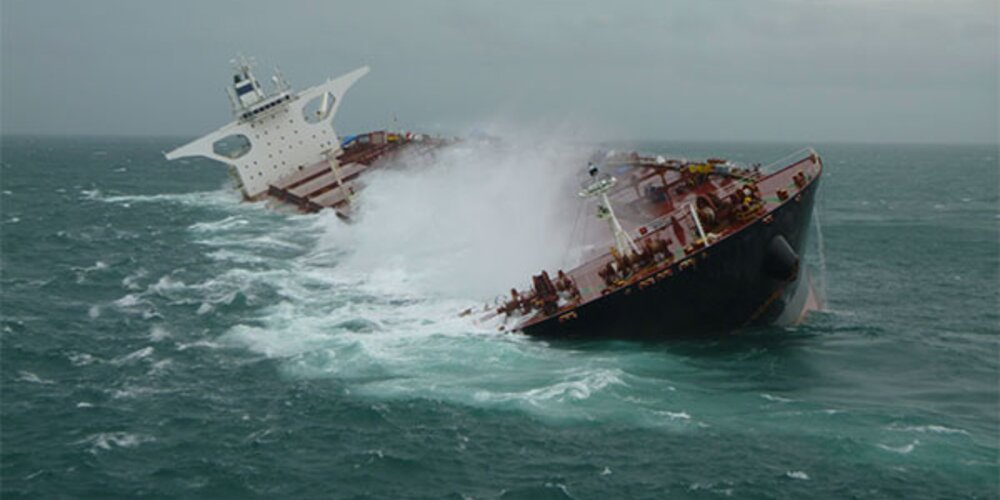Browse our services
Explore how Brookes Bell can help you
Find an expert
Meet our team, find and expert and connect
Contact us
Get in touch, we're here to help

Insurer Allianz Global hailed a record low level of shipping losses in 2022 when it released its annual Shipping and Safety Review earlier this year. However, while a year-on-year reduction of more than one-third in losses among ships over 100 gross tonnes was good news for shipowners, the review highlighted increasingly complex challenges that are impacting both overall safety and the difficulty of salving vessels when accidents do occur.
At the Seatrade Salvage & Wreck Conference in December, Captain Shriram Pathak, Senior Marine Risk Consultant at Allianz Commercial, noted that fire and explosion had ranked second highest among causes of losses at sea, responsible for nearly a third of all losses. That proportion has been driven higher in part by the increasing use of batteries on vessels and the carriage of electric vehicles.
The Li-ion batteries used in electric vehicles can be subject to production of large quantities of flammable gases as well as ‘thermal runaway’, which is a rapid self-heating reaction that can cause an explosion and/or fire, particularly if they are not manufactured to high standards or if damaged battery cells or devices are over-charged or short-circuited. Fires in Li-ion battery packs are difficult to extinguish and are capable of spontaneously reigniting.
One example of a vessel fire where Li-ion batteries had an impact was the FREMANTLE HIGHWAY car carrier incident in July. While the fire off the coast of the Netherlands is still being investigated – the presence of around 500 electric/hybrid vehicles in stowage on the ship will have contributed to the challenges faced initially by the crew and thereafter the salvors/marine fire-fighters tasked to respond.
During the conference, Master Mariner, Captain Adrian Scales of Brookes Bell, spoke from the conference floor about how the heat intensity of the fire had melted aluminium, leaving two-metre metal ‘stalagmites’ building up on the lower decks. More importantly, the gases being generated from heated Li-ion batteries and the other burning materials had collected in the upper deck of the vessel in short order which had thereafter exploded and raised the vessel’s roof by around two metres. This unexpected explosion displaced the fire-fighting pipework the crew required and also prevented the crew accessing their lifeboats, he said.
The FREMANTLE HIGHWAY salvage team faced significant challenges related to electric vehicles. Even for undamaged vehicles, the batteries were exposed to high temperatures and fire-fighting water. The removal of the vehicles was undertaken under careful control and planning of the salvors and professional marine fire-fighters who were all required to wear chemical protective PPE and SCBA or filtration face masks due to the heavy metals and toxicity of the dust parties in the fire zone. Before removing cars, the vehicles were washed to remove the chemicals and fire residues.
Another reason for lower overall losses in 2022 was the increase in the size of cargo ships, meaning fewer ships carrying more cargo. Not only did this make average claims more expensive, but also added its own challenges to salvage operations. A grounded ultra-large containership in shallow water near port, for example, would make positioning a heavy lift crane difficult, as well as organising the task of removing and storing potentially more than 20,000 containers.
According to Seatrade, organiser of the Salvage & Wreck Conference, the event was also characterised by concern that, with fewer accidents, salvors’ resources were being stretched. Less business had resulted in leaner teams, meaning that fewer salvage experts had been stretched to cover wider areas. As the recent high-profile case around the rotting FPSO vessel FSO SAFER off the coast of Yemen has shown, complex jobs require a high degree of expertise and multi-stakeholder co-ordination to avoid both unnecessary cost and significant environmental damage.
Faced with growing challenges and stretched resources, demand is growing for Brookes Bell’s multidisciplinary salvage and wreck removal team. Projects can be made more cost effective and easier by working with a single provider offering expert advice, assisting with contractor selection or managing the entire administration of the contract.
Brookes Bell’s salvage team includes Special Casualty Representative (SCR) Master Mariners, Naval Architects, Marine, Civil and Mechanical Engineers. Specific services range from on-site survey and damage assessment and structural modelling to pollution control and damage reports. Brookes Bell can even prepare tender documents, evaluation and on-site monitoring of salvage and wreck removal, meaning shipowners and insurers can be confident that their project will be run smoothly even in the most complex cases.
You can find out more about Brookes Bell’s Salvage and Wreck Project Management and Assessment services here: https://www.brookesbell.com/marine-services/salvage-and-wreck/